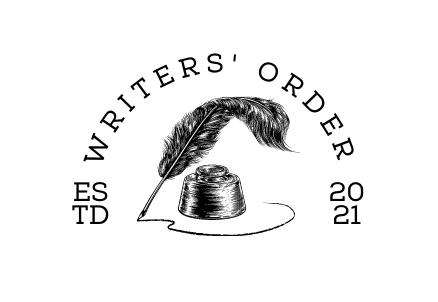You have to be the change to bring the change.

Short Guide to Writing About Artwork
Our content is reader-supported. We may earn a commission if you make a purchase through one of our links.
Whether you have a personal blog promoting your paintings or a magazine hired you to contribute to their art section, writing about art is always an appealing opportunity. It can also be an intimidating and frustrating one. It is primarily because writing about art is not a prerequisite for appreciating it.
You can find a painting or sculpture beautiful without being proficient in its stylistic and contextual analysis. However, weaving artistic descriptions through handpicked words always adds an allure to the subject itself. It also presents you with the privilege to better understand the work in defined rather than vague and generic terms.
Writing About Artwork – Monet’s Water Lilies Example

Suppose you are looking at this version of Water Lilies by Claude Monet, a crackerjack in the artistic world. Anyone with an eye for detail could make out the blue and green hues alongside the reflections and flowers in the pond. But a description of “blue water, green floating leaves, and reflecting trees” does not quite cut it.
It is mediocre at best, offering the reader nothing substantial that they can’t already figure out for themself. Contrastingly, a better way to approach the painting would be to pen about its French Impressionism and how the artist has employed multiple brushstrokes that retain their juxtapositional individuality yet provide a coherent picture. Like the Roccoco period from earlier times, impressionist paintings like Water Lillies also accentuate the beauty of nature with an immersive vision.
The lack of a defined form of the elements and soft colors diffusing into each other in the painting gives it an unparalleled dynamism. As an author, you could also provide the readers with something to chew on by mentioning the dream-like effect the painting builds through the direction of light.
The trick is, however, not to jumble together everything you can find about a particular artwork. The aim is to present the information in digestible chunks with proper organization of ideas. For your ease, here are some aspects you can include to perfect your art descriptions.
The Contextual Analysis is A Good Place to Start Writing About Artwork
One thing crucial to understanding art is its context. The Starry Night is beautiful to look at. But the eleven glowing stars exude more influence once you have enough information to picture Van Gogh painting the night sky from his asylum window after the amputation of his ear.
A less-cliche example is that of Angelica Kauffman’s “Cornelia Presenting her Children.” It dates back to the Enlightenment era when neoclassical art was taking root. Unless you inform the reader about the Roman emperors that the painter captured as kids, the work’s meaning would be lost.
To truly appreciate that painting, one needs to know the social and political situation of the time. It was an untimely and chaotic end to Rococo when emerging artists figured that art had become too frivolous and detached from the morals of society.
Seeking to reintroduce pedagogical works that could bear lessons, they sought out the classical periods. After all, who can claim more harmony, symmetry, and discipline than the Greeks and the Romans? Hence, in the painting, Cornelia as the mother of the Roman emperors who once lived is asked by a visitor about her jewelry. She brings her children forward, whom she raised as a widowed, single mother. In other words, placing the art in a historical period and informing about the social, economic, and political contexts is essential when writing about artwork.

Don’t Forget the Significance of Stylistic Analysis
The context without consistent references to the artwork itself can come off as a monotonous history lesson. To avoid boredom in the audience, a thoughtful writer would allow them the room to ponder over the stylistic and thematic elements. It can include mentioning the composition of the painting. Such as whether the subjects are arranged pyramidically or if they seem all over the place. You could also specify a horizon line if the art piece has one or how the artist uses linear perspective to draw attention to a focal point.
Writing about style entails a further description of what meets the eye—for instance, speculation about the artist’s color palette. In the famous Potato Eaters by Van Gogh, the mood is gloomy and disdainful primarily due to the dark and muted color palette. The dark walls in the background are not much distinct (color-wise) from the dining figures of the farmer family.

Add Subjective Interpretations as You Move Ahead
Interpretation of the style and what it could mean is like the cherry on the top. In Potato Eaters, the notion of people blending into the background is thought-provoking because it could suggest the social insignificance of the lesser-privileged, or it could be a statement about the gloominess of the soul.
The glowing lamp over their faces could be an anti-thesis about the moments of joy one feels when sharing the company of similar people, or it could illustrate a familial bonding. The bottom line is don’t be afraid to take a leap and read deeper into the meaning. As a writer, apart from your vocabulary and tone, your insights about the artworks are of the essence. Rather than stuffing the final piece with googled facts, your writing should have a touch of creativity and a sense of passion for the subject.
Complement Your Writing With Visuals When Writing About Artwork
As ironic as it sounds, while writing about artwork, just the words are not enough. Primarily since you draw your content from art, the importance of strong visual techniques is undeniable. Firstly, the image placement of the artwork should be convenient for the reader. No one enjoys having to scroll ten pages up to find a painting whose design and color scheme are in a later description. You need to learn how to use colors to enhance your writing.
Ensure that the images are closest to the stylistic analysis section since the reader’s mind seeks a connection between words and the work. Besides, an incredibly powerful technique is the use of zoomed-in images. Thanks to editing software, you can feasibly draw lines on the picture to illustrate a perspective or remove the background to focus on only the subject. Any other measure that ensures that your point gets across smoothly is a good one. Conclusively, remember to provide objective and subjective data aptly and feel free to employ other techniques to enhance your writing.




